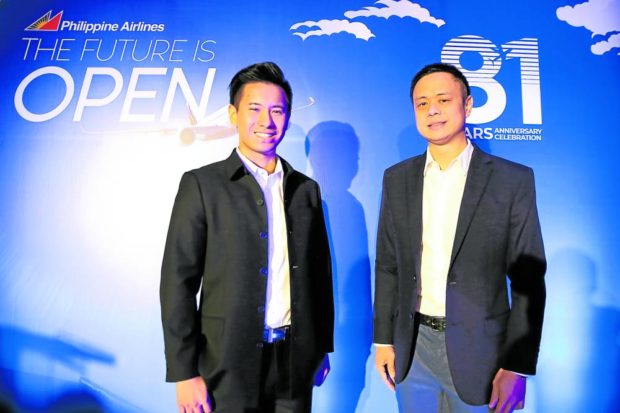PAL’s new generation outlines plans
Taipan Lucio Tan’s Philippine Airlines (PAL) is betting on technology innovations and new cargo options as its ticket to faster recovery following a brush with bankruptcy during the global health crisis.
As PAL turned 81 years old on Tuesday, its newer and younger generation of leaders pledged to turn the business around and rebuild passenger traffic in its domestic and international routes while transforming the flag carrier “into a 21st century airline.”
“We will adopt a youthful outlook and will no longer be tied to the old traditional airline models that run on legacy systems and the comfortable notions of the past,” Lucio Tan III, PAL director, said during PAL’s anniversary celebration onTuesday.
“We envision PAL as a tech company, using technology to deliver smarter and simpler products that customers will love,” added the taipan’s 29-year-old grandson.
Spearheading this effort is Stanley K. Ng, 42, who was recently named PAL’s acting president and chief operating officer.
Article continues after this advertisementNg said PAL planned to develop new all-cargo markets to “remove dependence on passenger traffic as single-revenue stream.”
Article continues after this advertisementThis will include hybrid cargo and passenger flights to the US and other markets, a new cargo reservation system and mobile app as well as the carrier’s diversification into domestic cargo deliveries to homes and offices.
Ng told reporters the last-mile segment would allow the airline to tap into the e-commerce boom.
“It’s in the infancy stage right now,” he said, adding that the business would be pursued with partners.
Ng said PAL would also fully revamp its Mabuhay Miles frequent flyer program as it aims to have five million members within 2022. He said PAL would also improve the customer service experience and increase contact channels with the use of messaging apps.
Passenger operations will remain PAL’s core business as the carrier seeks to restore domestic prepandemic flights by next month.
The younger Tan said diversification would help protect PAL from future crises.
“This was a key lesson of the global pandemic. When our regular business vanished, our energies went into finding new ways of doing business,” he said.
PAL is realigning its strategy for future opportunities as it faces emerging threats such as the steep increase in fuel costs caused by the Russia-Ukraine conflict.
Ng told reporters PAL would start to impose a fuel surcharge to blunt the impact of expensive oil while keeping fares “reasonable for passengers to fly.”
He said PAL also planned to increase its fleet as demand recovers after returning planes during its business restructuring. PAL entered and exited a Chapter 11 creditor protection protection program in the latter part of 2021 to cut about $2.1 billion in aircraft related debts.
